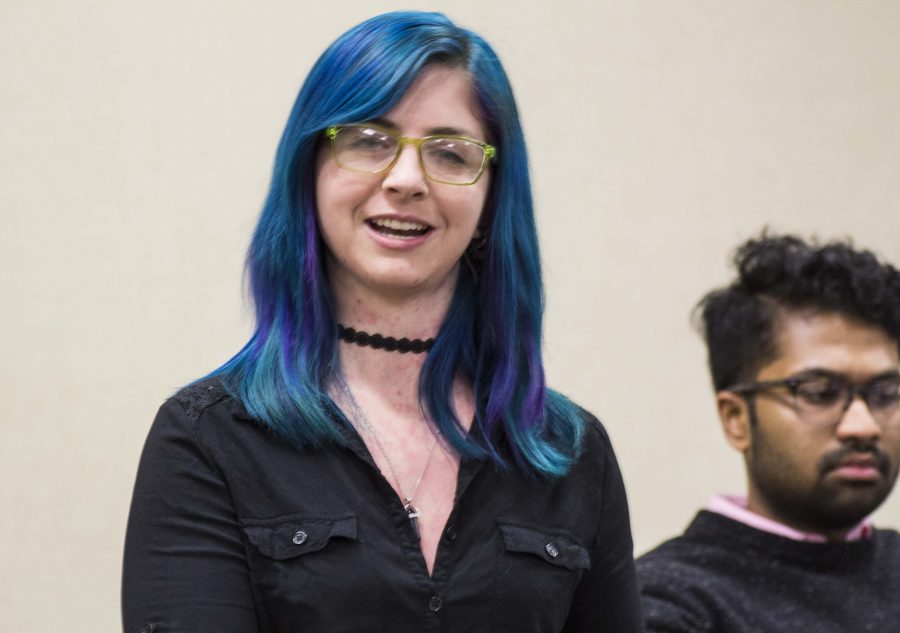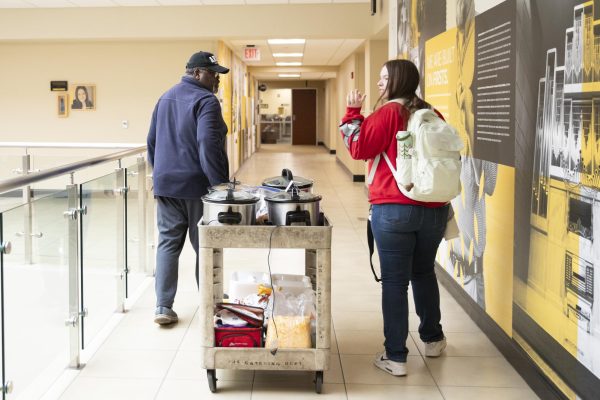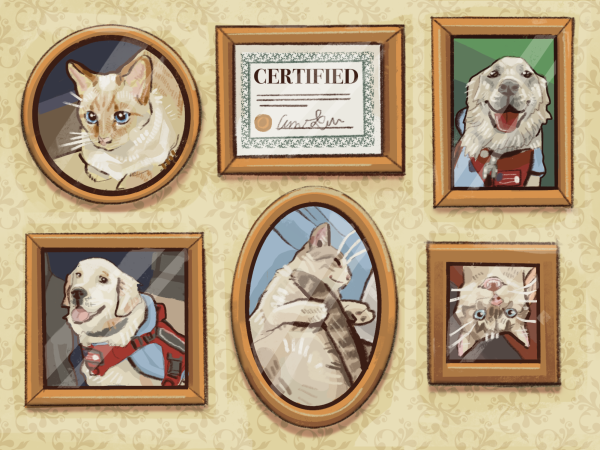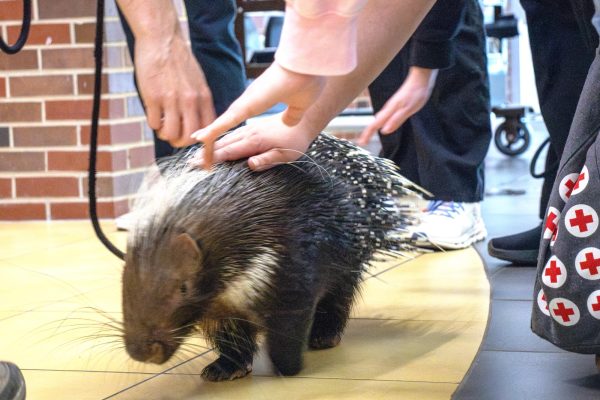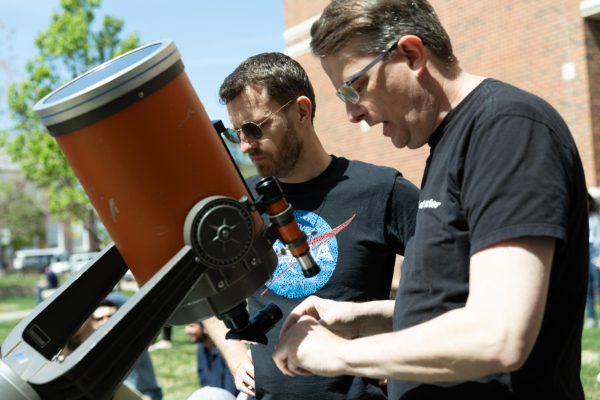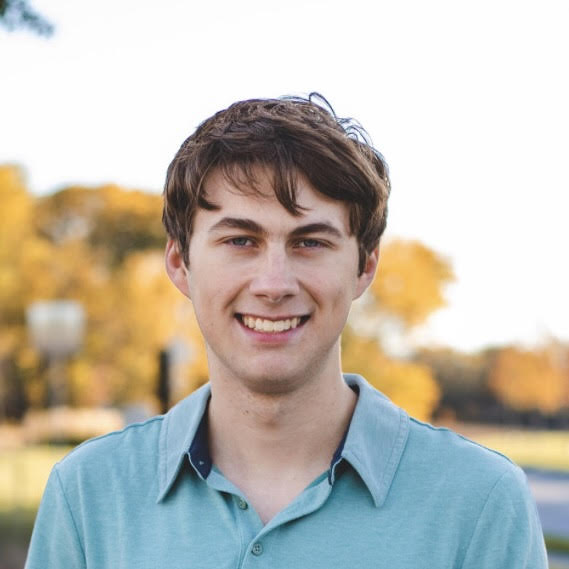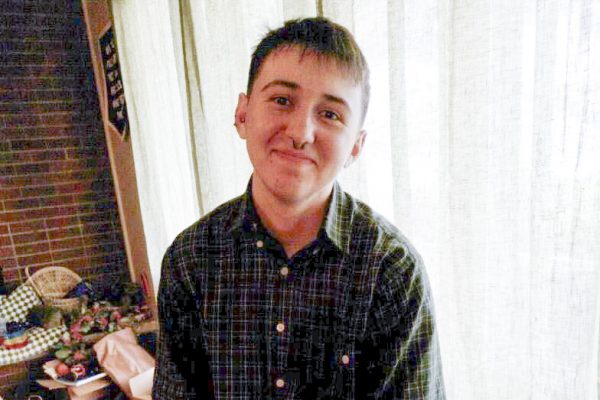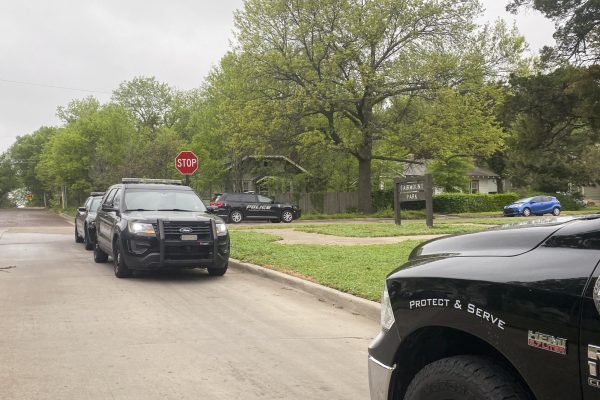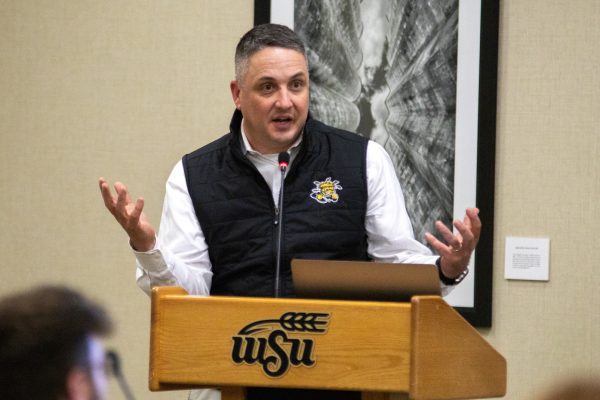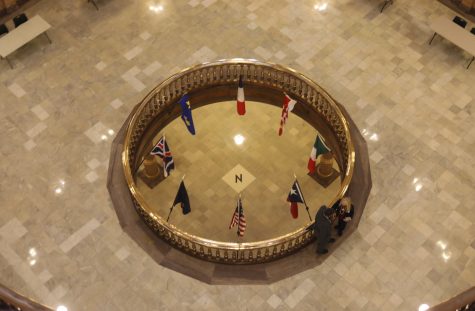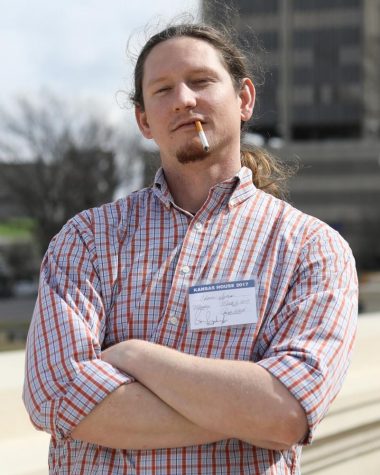‘Hate crime’ artist steps out of the shadows at SGA meeting
Addie Wise, Wichita State MFA student, met with Wichita State’s Student Government Association to discuss some controversial chalk drawings she drew on campus earlier this year. Wise drew controversial drawings at four different locations on campus that were considered a hate crime by many.
The night was cold and quiet, and she had her big, burly, bearded and tattooed husband as a lookout. It was midnight — early enough to avoid suspicion and late enough not to get caught.
Addie Wise, graduate student in the art department, had convinced herself it wouldn’t be a big deal — maybe to calm her nerves, she said, maybe because she didn’t think anything she did would get much attention.
By morning, that would all change.
She dropped her stencils on the sidewalk, where she knew would get the most traffic — right in front of the newly restored Joan Miró mural on the outside wall of the Ulrich Museum of Art — and chalked the faces: red, white and black.
She smeared the faces with her hand — the eyes of the red face, the ears of the white face, the mouth of the black face — see no evil, hear no evil, speak no evil.
Then the words.
By morning, her student email account — and every other student’s — had an email from university President John Bardo, calling her art project, because of the words attached to it, “hate speech” and “vandalism.”
The words she had stenciled were epithets for American Indians, gay men and blacks — “Savage,” “Nigger,” “Fag” — words she pulled from her friends who she said matched those identities, asking what the most hurtful thing they had been called was. Words meant to trigger, to emotionally hurt.
“I knew the words would get the most attention,” said Wise, who is white and female. “Honestly, they aren’t even in my vocabulary, but let me ask you a question: What would have been the response if it was just the faces without the words?”
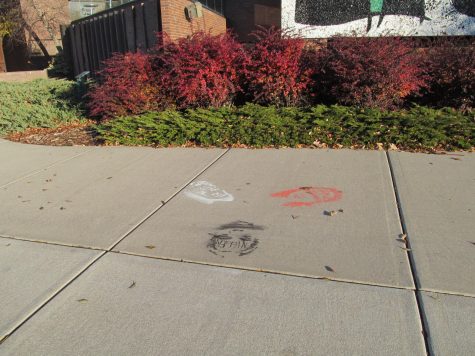
The drawings were removed before many students encountered the provocative portraits.
Wise said she hoped people would be drawn in by the drawings and then ponder the words.
“It was a big risk, but I trusted that people would recognize it as an art piece.”
But without the context provided by the identity of the artist, or the artwork itself, the art project escaped its bounds.
Some students felt threatened. Some dismissed the drawings as the work of a provocateur — the latest in a string of “fake hate crimes.” SGA President Joseph Shepard said the drawings were inappropriate regardless of the intention behind the drawings.
With more students feeling threatened, Wise turned herself in to university police.
“They were relieved,” Wise said. UPD released a statement, maintaining Wise’s anonymity and explaining her intentions. She received no punishment, “which kind of proved my point,” she said.
“As a cute little white girl, I’m the kind of person they think they have to protect. If it was someone else, some other race or gender, would they have handled it the same?”
Wednesday night, at the invitation of SGA President Joseph Shepard, Wise revealed herself in a public address to student government.
“After talking to people and hearing their questions, and providing the context of my intentions, I think I feel it was more successful. I’m glad I came forward.
“It became a collective piece, “ Wise said. “Everyone had their own opinion. And then the media took it — they work angles — and you could see the angle they wanted to take it.”
Immediately, while details were still sketchy, the media erred on the side of the worst-case scenario, Wise said.
“It was interesting,” she said of the whole experience.
“Because [the drawings] were removed, the only access people had was through the media’s filter.
“They didn’t even explain that there was a drawing involved — that it was only words in the description.”
Some students had quickly snapped cell phone photos of the drawings before they were power washed away.
Debbie Ojeda-Leitner, graduate senator and a woman of color, said she had a panic attack when a friend showed her photographs of the chalk drawings.
“I’m sorry,” Wise said. “I meant to trigger people emotionally, but I didn’t mean to cause anyone any physical harm.”
Asked if she could take it back, she said no.
“I would do it again, but in a different way.”
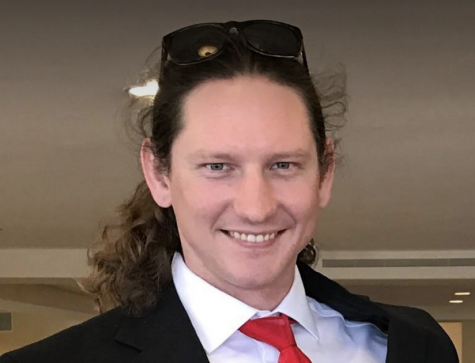
Chance Swaim was the Editor in Chief of The Sunflower from fall 2017 to spring 2018.
Swaim was a graduate student in the English Department working...




